One of my favorite Zodiac excursions was our stop at Eskimo Bay, a long-abandoned Inupiak settlement up a fjord in Greenland. Carol, our archaeologist afloat, brought history and prehistory to life with wonderful stories.
There were clearly at least four pit houses in the settlement, one of which a stream is quickly eroding. The main room of each pit house was only a few meters in diameter, small enough that it was warmed in deepest winter by a single seal-fat lamp and the body heat of the ten or so people who called it home.
They had few possessions and did most of the work of survival outside the dwelling. There were no provisions for cooking in the home because they ate a lot of their fish and meat raw — fresh, bloody game actually provides many more nutrients, including vitamin C, than cooked flesh.
- Depressions ringed with stones are the only remains of the pit dwellings. The pit house roofs were made of animal skins supported by a framework of bones, antlers, and very rare driftwood.
- Carol talking about one of several rock-lined pit houses that formed a small settlement that was abandoned hundreds of years ago.
- What looks like a jumble of rocks turns out to be the fallen-in remains of a rock-lined dwelling dug into the earth.
- Dwellings had two chambers. The outer chamber, a mere entry vestibule, was lower than the main room, so that heat would not escape when whatever was used for a door — probably a tent-flap of skin — was opened. The flat rock below is the door lintel between the entry chamber and main room.
- The kayakers gather around to hear what life may have been like for the people who called this home. Note that Matt, the kayak guide, carries a rifle for protection against polar bears.
- On a ridge above the pit houses we found several large hearths lined with bright white quartz that would reflect and intensify the light and heat of the fires. They might have been used for cooking, or for social gatherings, or as a signal to distant kayakers or sled drivers.
- Sheltered ledges on this bluff overlooking the fjord were used as work spaces, where some of the carved bone artifacts we saw might have been made.
- Kayakers are dots of color in a bleak landscape as they explore the grave sites on the ridge overlooking the tiny ancient village.
- People were buried sitting or curled up with their backs against a boulder. Smaller rocks were piled carefully around them until they were fully enclosed in a chamber that provided protection from scavengers — even polar bears! — as well as the elements.

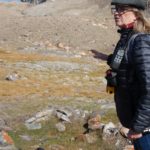
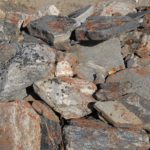
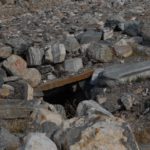
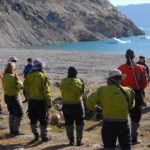
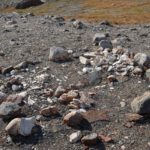
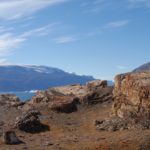
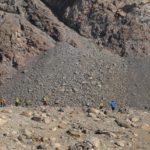
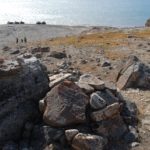

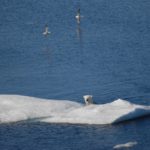
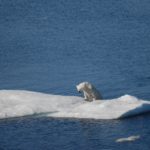
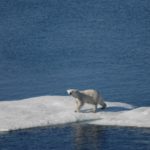

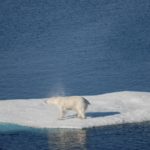
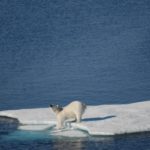

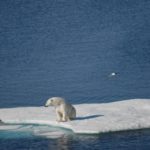
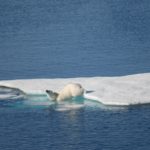
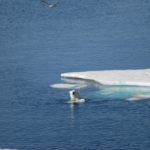
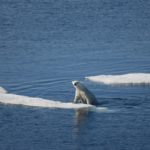
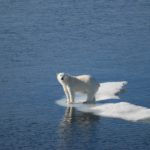


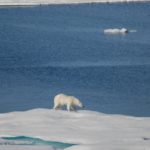

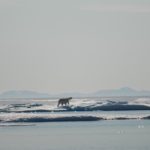
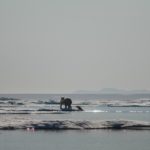


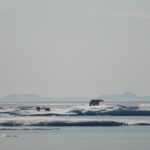
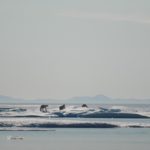
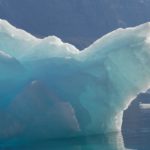
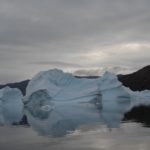
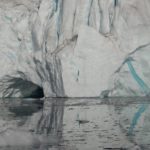
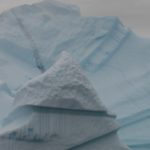
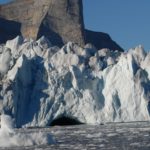

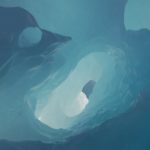


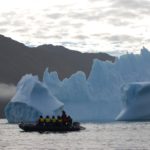
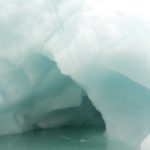

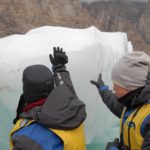

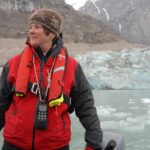
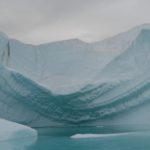
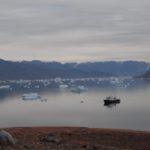
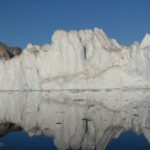
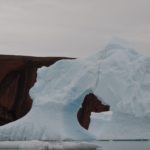

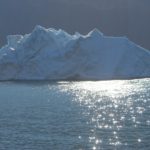
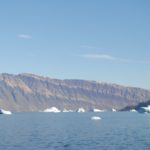

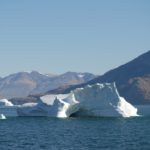

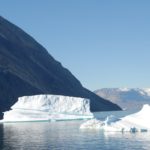
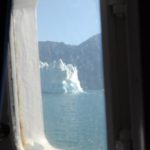
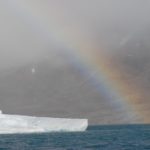

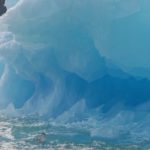
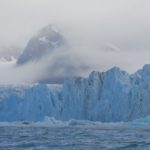

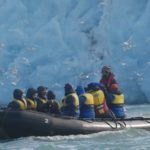
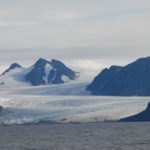
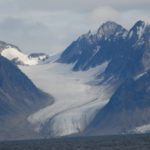
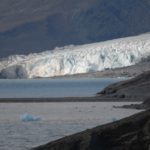
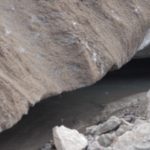

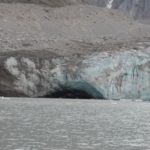

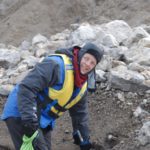

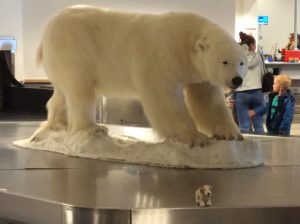
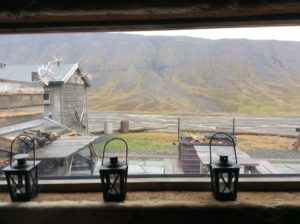
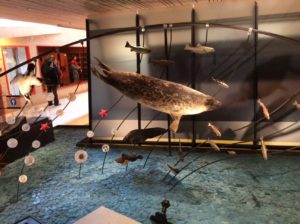
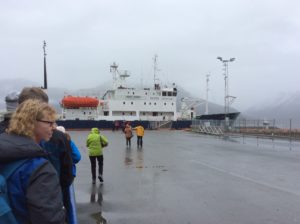
Recent Comments